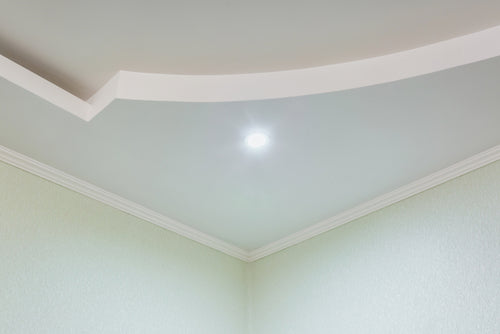
How to put led lights in a skirting board
If you want to put LED lights in skirting boards, all you have to do is:
- be mindful of the floor’s surface (where the light will fall on)
- position the LED strip lights between the space where the wood meets the wall
- and find an appropriate place to store the power source so it’s out of sight.
It’s really that simple!
Putting LED lights in skirting boards is all about finding the optimal position. There are plenty of ways to use skirting board lighting to your advantage, whether illuminating coving and cornices, kitchen or bathroom cabinets, drop-down ceilings or even bookshelves.
So, if you’re ready to give your room a budget-friendly makeover, now is the time! Stick with Light Supplier as we tell you exactly how to light up your skirting boards.
What are the advantages of skirting board lighting?
At first glance, even the most seasoned interior designers may not truly appreciate the functionality of skirting boards. They protect your walls from dust, dirt or paint and offer a convenient surface for mounting LED strip lights.
But what are the other advantages of skirting board lighting?
Clean look
Despite bending through corners around your home, skirting board lighting offers a clean, uniform way to light up your home.
All you’ll need to secure your strip lights is LED tape (so you don’t damage the paint on your skirting boards). Once that’s done, you’ll be left with an atmosphere-enhancing glow around your room.
Easy installation
As we mentioned before, installing LED strips on your skirting boards is incredibly easy and time-saving. Find the ideal light colour, the right temperature, grab your chosen adhesive and get to work!
If you’re installing LED strip lights on a drop-down ceiling or in their cornices, you may need more help from a friend or family member: essentially, someone to hold the ladder! But once you’ve secured your strips, the rest is a breeze.
Money-saving lighting option
If you’re sick of using lamps and the ‘big light’ to make your room feel cosy, why not enhance the ambience and save money with LED lights? Their LED technology is designed with energy efficiency in mind.
Their long-lasting diodes will give you more light for less money, illuminating your home with their average 30,000-hour lifespan (3 and a half years!). Take our RGB Colour Changing Flexible LED Strip, for example.
These strip lights have a low power consumption, an IP65 rating, a range of compatible power converters, and will work at 70% of their capacity for 3 and a half years, even longer if you mitigate their use to certain occasions.
How to put LED lights on skirting boards
Saving on space, money and enhancing your home’s lighting plan are just a few ways skirting board LEDs could benefit you. Once you’ve settled on a product, all that’s left is to start the installation process!
Before reaching for the adhesive, assess how your LEDs reflect onto the surface below.
The light may fall in a way that reflects LED spots onto your floor, leading to a less diffused appearance. If you’re facing this problem, LED strip lights like our Fully Bendable FLEXile IP44 LED Strip Lighting have no visible diodes and will give you a continuous light-bar look.
You’ll also need to be mindful of placing your LED strip lights too close to the wall; otherwise, you might see light spotting on the walls too. The perfect place for your LEDs is the space along the top, where the wood meets the wall.
Secure them with your LED tape after finding the optimal position, and switch on your lights to see the results!
How to install LED strip lights on drop-down ceilings
Drop-down ceilings are a striking feature of modern homes, featuring a suspended area that protrudes from the structural ceiling. These ‘false’ ceilings are an excellent place for LED strip lights because they leave a spacious gap around the edge of the wall.
You can fit the LED tape facing upwards, horizontally or vertically, facing sideways.
How to install LED strip lights on cornices and coving
Cornices and coving are a form of decorative moulding found where walls and ceilings meet.
This junction provides the perfect, hollow location for LED strip lights. To avoid seeing visible light dotting on your ceiling or walls, position the strips as far from the back wall as possible and secure them with LED tape.
How to install LED strip lights under kitchen cabinets and bathroom cabinets
Under-cabinet LED strips are excellent task lighting for kitchens and great mood-setters in bathrooms.
Look for a lip on your cabinet before installing it: this is the outer edge profile of the door. Your strip lights will sit nicely in this area, but if your cabinet doesn't have a lip, don’t worry! You’ll be able to fit the strips deep enough so that they’re out of sight.
Choose an IP65-rated LED strip light (for dust and water protection) and secure it with LED tape.